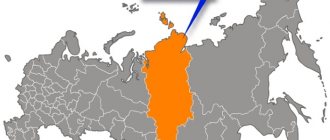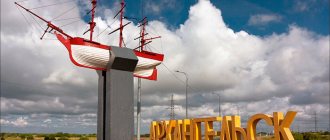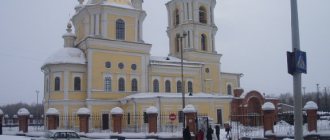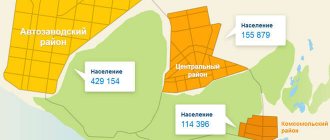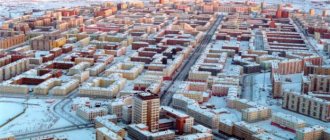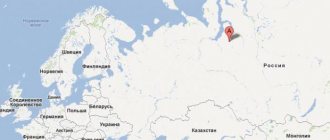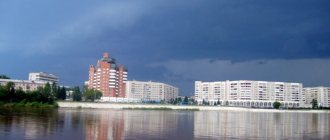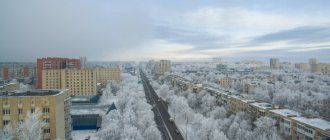Many people are interested in the demographic situation in the country. As a rule, people are interested in the situation in their region of residence. The ability to view up-to-date information online significantly saves time.
Many organizations need up-to-date information on an ongoing basis: on the number, national composition of citizens of the locality. The ability to obtain information from one source will facilitate the work of a number of structures whose work is based on such data. Let us provide detailed statistics on the number of citizens and the national composition of Krasnoyarsk.
Data by year
Krasnoyarsk entered the list of million-plus cities only in 2012. Previously, there was a significant increase in population: due to migration and natural increase.
- 2004: The city's population was 912,800.
- 2005: 917 200.
- 2006: the population in Krasnoyarsk was already 920,900.
- 2007: population was 927,200.
- 2008: exceeded 936,400.
- 2009: the number of inhabitants became 947,801.
- 2010: 973 826.
- 2011: 973 900.
- 2012: 997 316.
- 2013: 1 016 385.
- 2014: 1 035 528.
- 2015: 1 052 218.
- 2016: 1 066 934.
- 2017: 1 082 933.
- 2018: 1 090 811.
- 2019: 1 095 286.
- 2020: 1 093 771.
In just 16 years, Krasnoyarsk has grown by 200,000. At the moment, the growth trend continues; experts say that if the situation is stable by 2030, the number of residents could exceed 1.5 million.
19th century gold rush
Gold found on the Sukhoi Berikul River (Kemerovo region) shook up the whole of Siberia. After the mines of merchants A. Ya. and F. I. Popov on the Sukhoi Berikul, Mokry Berikul and small tributaries of the Kiya began to yield 16 pounds a year, prospectors flocked to the taiga. By the way, gold mining is not a cheap pleasure. The Popov merchants spent more than 2 million rubles on exploration alone, money unprecedented at that time.
There were gold-bearing areas throughout almost the entire territory of Western and Eastern Siberia. They looked for gold everywhere. Krasnoyarsk was no exception. He was washed on the Bugach River, Afontova Gora, not far from the railway station, on Stolby. Krasnoyarsk shone with luxury on display, incredible carousing, fights, theft and cards. Nevertheless, gold mining provided good income for hundreds of people. The taxes levied made it possible to develop the social sphere and infrastructure of the city. But most of the capital left Krasnoyarsk.
In addition to gold mining, the railway played a huge role in the development of the city. Rails for it were purchased in England. From Scotland through the Arctic Ocean and the Kara Sea they were delivered to Krasnoyarsk. In 1913, the first power plant was built in Krasnoyarsk and a water supply system was installed. The city was reputed to be the most beautiful and comfortable in Siberia.
About the city
Krasnoyarsk is one of the largest subjects of the Russian Federation. It has the status of the largest cultural center in Eastern Siberia. It is an educational, industrial and economic center. The major development explains the rapid increase in residents over the past 20 years.
Located on two banks of the Yenisei, the area of the city is 359 square km. The density is 2,700 inhabitants per square kilometer. He is a member of the Association of Siberian and Far Eastern Cities. Krasnoyarsk has repeatedly won the competition for the most comfortable city in the Russian Federation. The standard of living is higher than in the region.
This is explained by the impressive number of employment opportunities for young specialists; developed industry recruits students for internships at leading factories starting from the 2nd or 3rd year. After graduating from college, many go to work at familiar factories.
Small businesses are well developed in the city, which opens up a huge number of jobs for specialists in various fields. It is quite easy for the younger generation to find a job at first, on a permanent basis, according to their preferences. Several employment centers are actively working to help citizens find employment.
Land development
The territory changed radically after its annexation to Russia. The year of foundation of the city of Krasnoyarsk is called into question by many historians. There is reason to believe that the first Russians appeared in these lands at the turn of the late 16th and early 17th centuries, but they did not stay here due to their small numbers and great distance from the forts, where administrative power and small detachments of archers and Cossacks were concentrated. The founding of Krasnoyarsk became possible only after the construction of the Mangazeya fort, located on the Siberian Taz River, which opened the way to advance further to the east.
These lands, in fact, were ownerless, practically uninhabited. Various tribes roamed through them, there was no statehood. The formation of settlements on the territory of Siberia dates back to earlier periods of time; at the time of the appearance of Russian pioneers in these regions, these lands were part of the Principality of Ezersky of the nomadic tribes of the Yenisei Kyrgyz. These places, rich in animals, in particular fur-bearing animals, fish, forests, berries, pine nuts, and mushrooms, attracted Russian fishermen and hunters here. They appeared in these parts presumably at the end of the 16th century.
Rumors about the riches of this region reached the Russian tsars. Cossack expeditions were equipped for the Urals; in the established forts, the interests of the state were represented by the governors sent here with detachments of archers. Their goal was to establish the laws of Russia here, to collect taxes and taxes, the so-called yasak.
National composition
Russia is a very multinational country, which is clearly felt in large cities with developed industry. A colossal number of visitors from the Middle East work at industrial enterprises in the city and region:
- 92% Russians.
- 1% Ukrainians.
- 1.01% Tatars.
- 0.44% Germans.
- 0.75% Azerbaijanis.
- 0.57% Chuvash
- 0.72% Armenians
Many citizens prefer to travel to work in the regions of Siberia. This is explained by the opportunity to earn better money; there are not a large number of visitors there.
The role of the Orthodox Church in the development of Siberia
The Russian Orthodox Church also played a major role in the development of Siberia. Priests and monks walked along with the Cossack detachments. When the forts were founded, churches were immediately built in which services were held. The church had two goals. The first is the spread of Orthodoxy to the east, the second is connection with the Motherland, with native roots, spiritual support.
It was true faith that helped the pioneers endure all the hardships and hardships, strengthened them spiritually, making it clear that their hardships were not in vain. The founding of Krasnoyarsk was no exception. In each newly formed fort, a church was built. During the development of Siberia, wild, almost uninhabited lands were given over to monasteries. Monastic settlements were built, which gradually became overgrown with people who, voluntarily or by the will of fate, found themselves in these harsh collapses.
During the development of Siberia, an indispensable law was in force, according to which a settlement with several houses must have a chapel, a village - a church, a city - a monastery. It was the Orthodox ministers who marched with the first detachments of Cossacks who helped organize the motley stream of people rushing through the Urals. These were the sovereign's servants, explorers, settlers, escaped convicts, criminals, peasants fleeing serfdom and hopelessness. Having crossed the Urals, they felt freedom in the understanding of permissiveness. Only one thing united them and made them a single people - faith in God.
Gender and age
Over 53% of women live in the entire region. There are 1,144 women per thousand men.
- Among the 53% of women, 18% are minors, non-working citizens. 50% of the female population is currently able to work, 30% are women of retirement age
- 47% are men, which is equal to about 517 thousand people. 70% of the male population are able-bodied citizens, 30% are pensioners, minors who are unable to work. The average age of women in the region is 44 years, which is 10 years more than in the regions.
Coat of arms
The coat of arms of Krasnoyarsk is presented in the form of a French shield. On a red field there is a golden lion rearing up. The right paw of the animal has a spade, the left one has a sickle.
The shield is topped with a tower-like gold crown with five teeth and a laurel wreath. The structure is held in place by a silver unicorn (left) and a horse (right). Animals have hooves, manes, and tails made of gold. The eyes and tongues are scarlet. The base is entwined with a ribbon of the Order of the October Revolution and is made in the form of an ornament.
The artistic composition was approved by decision No. B-169 of May 26, 2010. Included in the State Heraldic Register of the Russian Federation under No. 6263.
Marriages and divorces
According to statistics, in 2021 there are 650 thousand marriages. 83% are officially registered, 17% are civil, unofficial marriages. Every year, 15-18 thousand couples get married, registering their relationship in the registry office. Annual divorce statistics indicate 10-11 thousand divorces.
Compared to previous years, citizens became much less likely to get married. In 2021, the number of registered unions was 23 thousand couples, 9 thousand divorces.
The decline is explained by deteriorating conditions for young families. The lack of new housing prevents couples from purchasing suitable, comfortable housing. Couples prefer to stay in a civil marriage, renting housing. Alternatively, many move in search of more suitable conditions for creating a new unit of society.
The colossal number of industrial enterprises leaves its mark on air quality, which helps reduce the desire of residents to get married and start a family.
When is it celebrated?
Before the revolution, mass public festivities dedicated to the memorable date were traditionally held on August 18–19 in order to combine them with the church holiday of the Transfiguration of the Lord. Solemn liturgies were held in local cathedrals and churches, representatives of church and secular authorities congratulated the local population.
During Soviet times, mass celebrations in honor of the anniversary of the founding of Krasnoyarsk were not held until the late 1970s. After this, the celebrations were resumed and were held in August. Since the 2000s, folk festivities have been moved to the month of June; they are often combined with Russia Day.
Migration
Part of the working-age male population prefers to travel to work in the regions of Siberia. This is due to the high chance of getting a job with a higher income, increasing the family’s standard of living.
Considering the epidemiological situation, residents are trying to move further away from the millionaire population. Many are moving to settlements in the Krasnoyarsk Territory, where there are fewer people infected with the virus.
Over the summer of 2021, the outflow from the administrative center of the region amounted to 12 thousand. 60% of residents remained in the region, moving to smaller towns. 40% preferred to move to a neighboring region to minimize risks. 9 thousand residents left the country.
During the same time, the number of arrivals to the administrative center amounted to almost 76 thousand, 7 times more than the outflow. 20 thousand came from Russian cities. 50 thousand came from the cities of the Krasnoyarsk Territory. More than 6 thousand arrived from different countries, usually from neighboring countries.
Data for the Krasnoyarsk Territory
Features of the holiday
During the official opening of the celebration, congratulations are heard from local authorities, then the city flag is raised and a volley is fired from a signal cannon in the main square. After this, the holiday can be considered open. On the main stage, in public gardens and parks, you can listen to performances by live singers and musicians, including the local symphony orchestra. In the evening, participants in public events will enjoy a gala concert with invited stars from Moscow and other Russian regions. The evening traditionally ends with fireworks.
Figure 2. Highlights
Forecast
The total number of citizens is growing rapidly, even despite the epidemiological situation in the country. Due to the large influx of population from other regions of the Russian Federation, as well as from different countries, including the Middle East, the number of residents continues to grow. At the same time, the annual outflow is 10-15 thousand, 7 times less than the increase over the period.
According to statistics, over 8 years the number of residents has increased by 100 thousand. If the trend continues in the future, in 2030-35 the administrative center of the region could grow to 1.5 million. This is facilitated by the constant expansion of industry in the Krasnoyarsk Territory, which opens up a large number of jobs and opportunities for residents of not only the cities of the region, the country, but also many countries. Most of the visitors formally register their permanent place of residence.
Krasnoyarsk is a rapidly developing locality with a colossal number of unique employment opportunities. Students from provincial settlements tend to move to a larger region. This opens up opportunities for them to realize themselves as specialists in a narrow, profitable field, and gives them the opportunity to study further, choosing from an impressive number of educational institutions.
Story. Century XVII
In 1623, the Yenisei governor Y. Khripunov sent his envoy, nobleman A. Dubensky, to the place where Krasnoyarsk is now located, and at that time there were settlements of Cossacks who came here from the Ketsky fort, who were worried about the raids of local tribes. They turned to the Yenisei governor for help. Dubensky was instructed to choose a place for the construction of a fort that would guard the lands of the Cossacks. He chose a place, drew up a plan according to which Krasnoyarsk was founded, and left for Moscow for its approval.
Upon returning from Moscow with the approved plan, Dubensky led an expedition of three hundred Cossacks and went to the chosen place, where a fort was founded on the left bank of the Kacha River, called Krasny Yar. This place was located below modern Krasnoyarsk, opposite Tatyshev Island, which is now part of the city. Since then, it has been generally accepted that 1628 is the year of the founding of Krasnoyarsk.
Krasny Yar fort became a district center in 1631. After 28 years, a large fort was built, the purpose of which was to collect yasak. Local peoples, consisting of nomadic tribes of the Kyshtyms and Yenisei Kyrgyz, were already paying tribute to the Mongol state of the Altan Khans. That's why they refused to pay the Russians. But these lands were already on Russian territory, and by law they were obliged to pay taxes to the treasury.
Dissatisfied with this situation and incited by the Mongols, the troops of the Kyrgyz Khan Irenek besieged the fort twice in 1667 and 1679. Already in 1690 the fort received the status of a city and its current name. The founding of the city of Krasnoyarsk was fraught with great difficulties and trials, nevertheless it became the center of the advance of Russian explorers further to the east.
Soviet period
With the advent of Soviet power, there was a sharp increase in the industrial potential of the capital of Krasnoyarsk. If in 1923 there were 60,000 residents living here, then in 1939 there were already more than 180,000. It must be recognized that the population of Krasnoyarsk increased sharply during the Great Patriotic War. Being located deep in the rear, the industrially developed region became a convenient “safe haven” where large enterprises were evacuated from the west of the USSR. Many workers who arrived remained to live in the city. Over the next 15 years, the number of city residents almost doubled - to 328,000 in 1956.
Central
As the name implies, this is the business and historical center of Krasnoyarsk. Almost all administrative bodies are concentrated in the region. The housing stock can be described as old, represented mainly by buildings erected under Stalin, although of fairly good quality. After all, almost all houses in that period were built according to individual projects. The main problem of the Central district of Krasnoyarsk is the lack of parking spaces. The cost of housing and commercial real estate is highest here. The area is home to 75.7 thousand people.
There are 5 higher educational institutions and 121 sports facilities, there are exhibition halls, theaters and concert halls.
The district includes the Pokrovka microdistrict, it is located on the crust of the Krasnoyarsk fort. Today there is active development of the vacant lot here. This microdistrict is designed for young people who are ready to live not in the very center, but close enough to it, and are ready for a mortgage.
Criminal situation
There is a rating of districts of the city of Krasnoyarsk according to the level of residential safety, which was compiled based on the number of calls to patrol cars.
The Oktyabrsky district was in the lead. Most often, the police had to go to the streets: Kalinin, Zabobonova, Kurchatov, Vysotnaya. In second place was the Kirovsky district (Pavlova, Novaya, Michurina and Gruntova streets). Most fights were recorded in this area. Then come the Sverdlovsk, Central and Soviet regions. For some reason, the Leninsky and Zheleznodorozhny districts are not included in the ranking.
Conclusion
The population of Krasnoyarsk at this stage of development is rapidly increasing. This is the fastest growing million-plus city in Russia. This phenomenon is facilitated by several key factors: the presence of a developed industry and a relatively high standard of living, positive dynamics of the birth rate, a favorable average age of the population - 37.7 years (according to the 2010 census), external and internal migration.
According to experts, Krasnoyarsk is attractive for labor migrants for several reasons. Firstly, the city is characterized by the development of a construction industry that predominantly employs migrants. Secondly, an important role is played by the active work of the relevant national-cultural associations, whose tasks include social assistance to displaced people.
There are many visitors from neighboring regions and republics. Most migrants come from Khakassia, Tyva, Buryatia, Irkutsk and Kemerovo regions. First of all, they are attracted by the favorable socio-economic situation, the amenities of the city, the availability of programs to support immigrants, and the availability of jobs. Krasnoyarsk is a modern city where both local residents and visitors feel comfortable.
